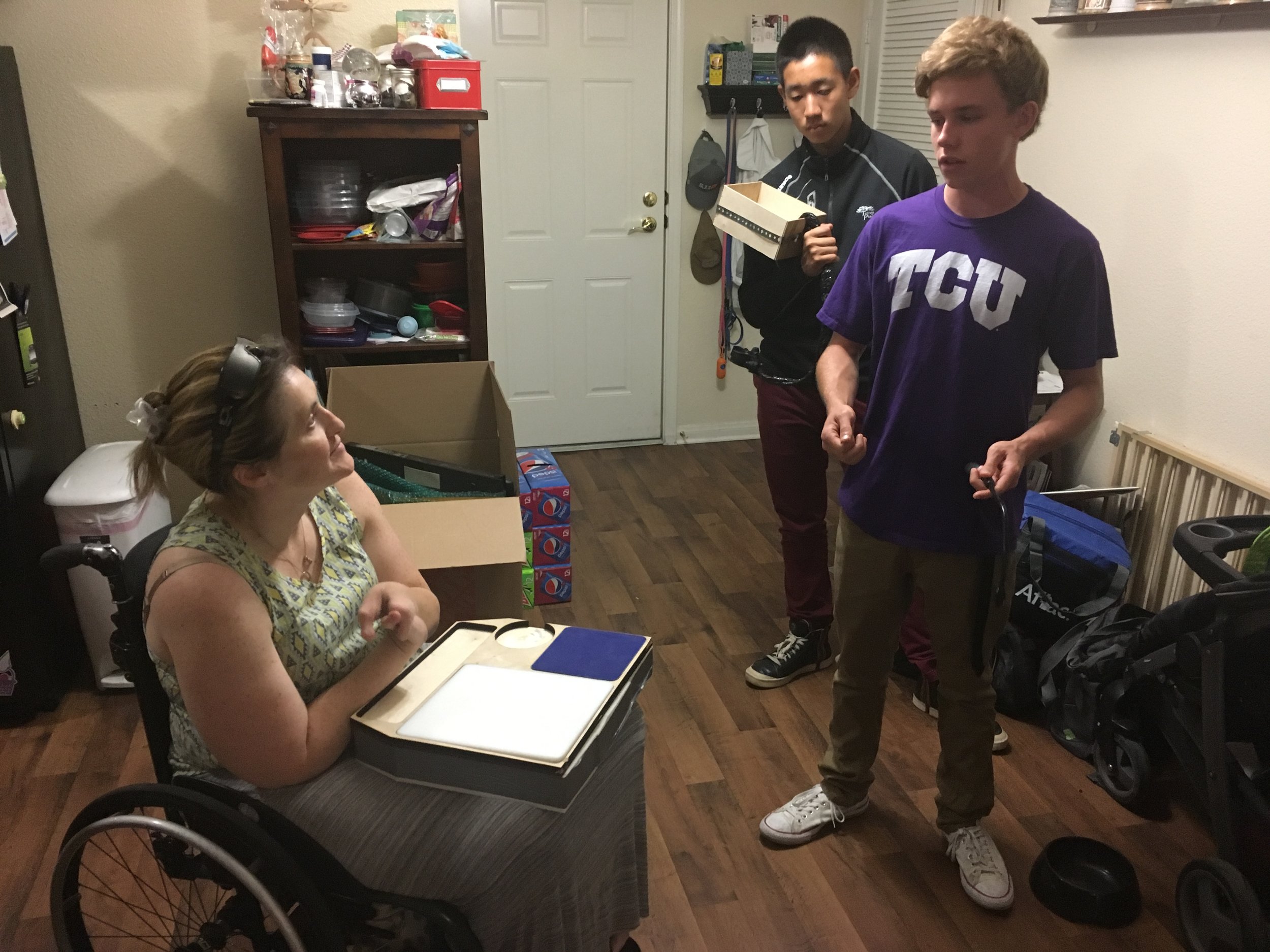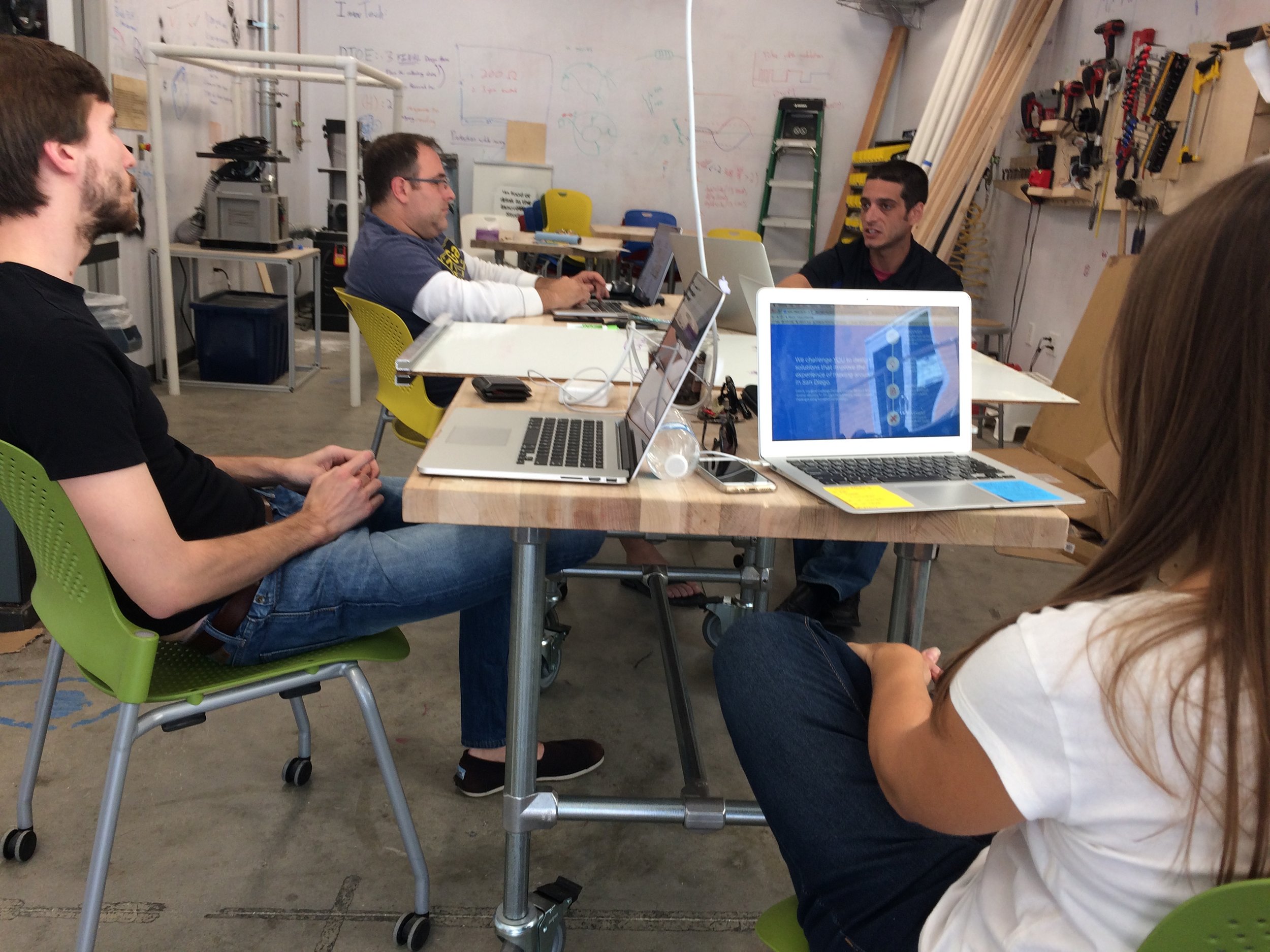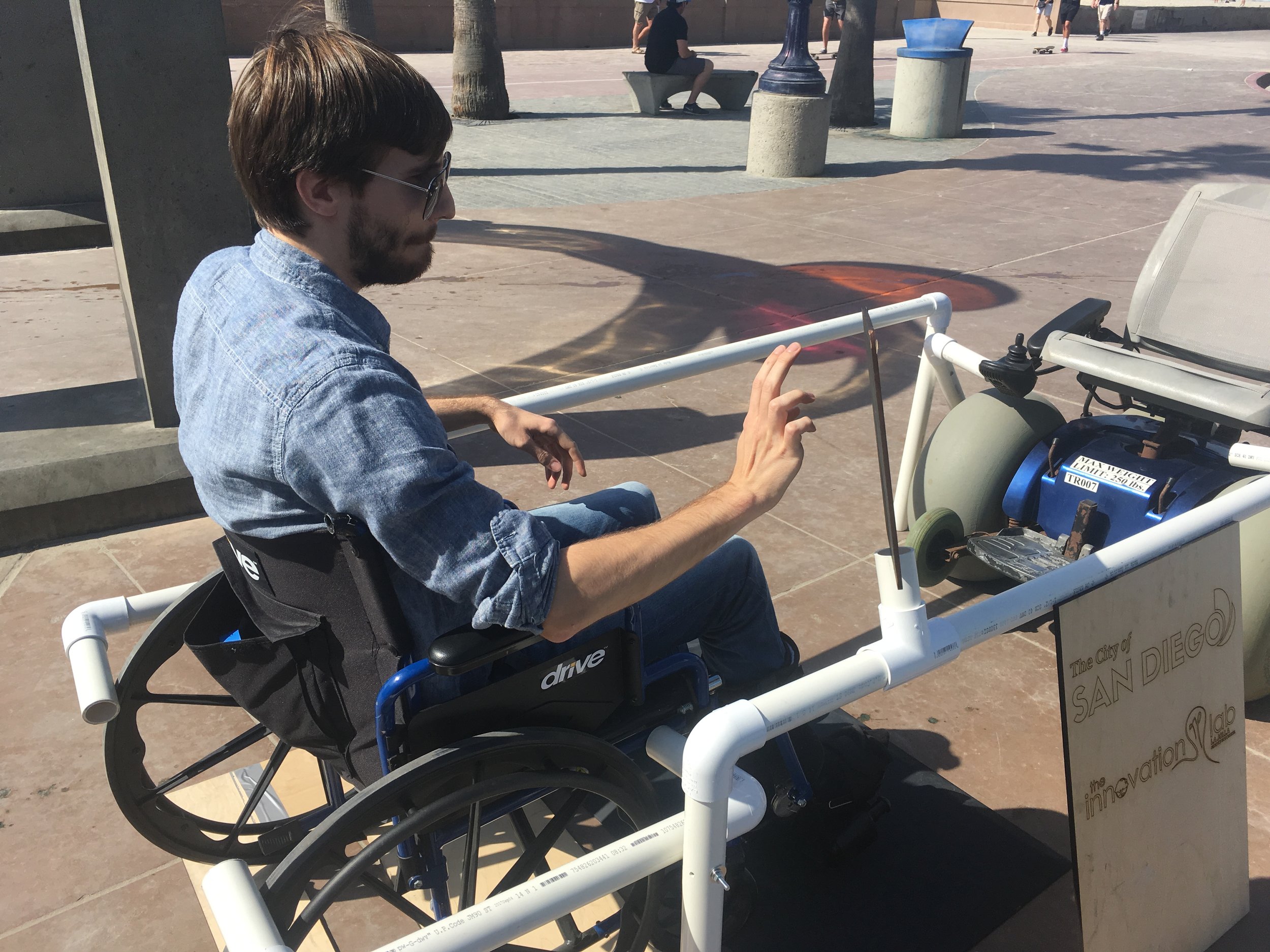Background
The Design & Innovation Staff entered the 2017 Design For San Diego (D4SD) competition. Below is the entry, which was named a Finalist!
Research
The La Jolla Country Day School Design & Innovation team had previously conducted ten, 90-minute, in-home, ethnographic research with people in wheelchairs, and had worked with Ottobock, a mobility products company. Using this previous knowledge, our team was able to combine past insights and motivations with new research to create a D4SD project.
This year's class went down to the beach, where we had an interesting observation:
A group of elderly women exited a car that had driven them from their community and two of the women moved with the aid of walkers. They were clearly regulars at the beach, but as soon as they came to the concrete wall, they had to pause. The two women without walkers decided to go down to the hard sand, while the two with walkers were stuck on the concrete path.
This anecdote led us to consider beach accessibility as one of our design areas.
Our D4SD-specific research included:
an interview with an employee of the San Diego Beach Wheelchair Program
a survey of a Chronic Pain Support Group
the LiveWellSD Portal
an interview with a current La Jolla Country Day School student who uses a walker
We spoke with them about their experiences at the beach and heard a story that confirmed our interest in this design area.
"[Two years ago] I went to the beach and my dad and I would always just would sit on this stone ledge. We would let my sister go and play... she would just go down there and we would watch her, and she would bring back shells and stuff for me to play with" - current LJCDS student
Analysis and Ideation Phases
The team officially began the competition with a discussion session where we considered various topics and avenues to approach for the D4SD competition. After much discussion, we honed in on beach accessibility and began detailing the various barriers to beach access, the purpose of beach access, and the motivations of our user groups. From our past research, we already had two incredibly valuable insights that we put to work:
A person with a disability strives to feel normal.
Disabled users want to be autonomous.
We then conducted our beach access research (see above) and analyzed the data with various methods to identify needs, map out the process, and consider different user groups.
From here, we went to work independently ideating on physical/digital/social solutions that would allow someone with a mobility impairment to experience the beach as similarly as possible to someone without such an impairment.
We evaluated our ideas on how well they fulfilled our design requirements (from research and from the competition), and honed in on the topic of getting people to the water without assistance from another person.
Our most novel and feasible solution would offer on-demand access to beach-specific mobility aids. The system would involve shared-use because of the low-use/high-cost of the beach-specific aids.
Building phase
The team set out to build a working prototype of a subset of the system, primarily composed of PVC pipe but also included some laser cut wood panels. Everything was prepared and worked on from within the La Jolla Country Day School Innovation Lab.
Our minimum viable product would be a mockup of a system that allowed someone with a moderate mobility issue to access a beach-version of their aid with no assistance.
TESTING & Iteration
The team took the apparatus to Mission Beach to do in-context research and testing. We spoke for a second time with one of the beach wheelchair program staff about the current program, tested our prototype, and received feedback from the employee. One member of our team was our test subject, getting to experience the beach first-hand from a wheelchair and the beach wheelchair.
























